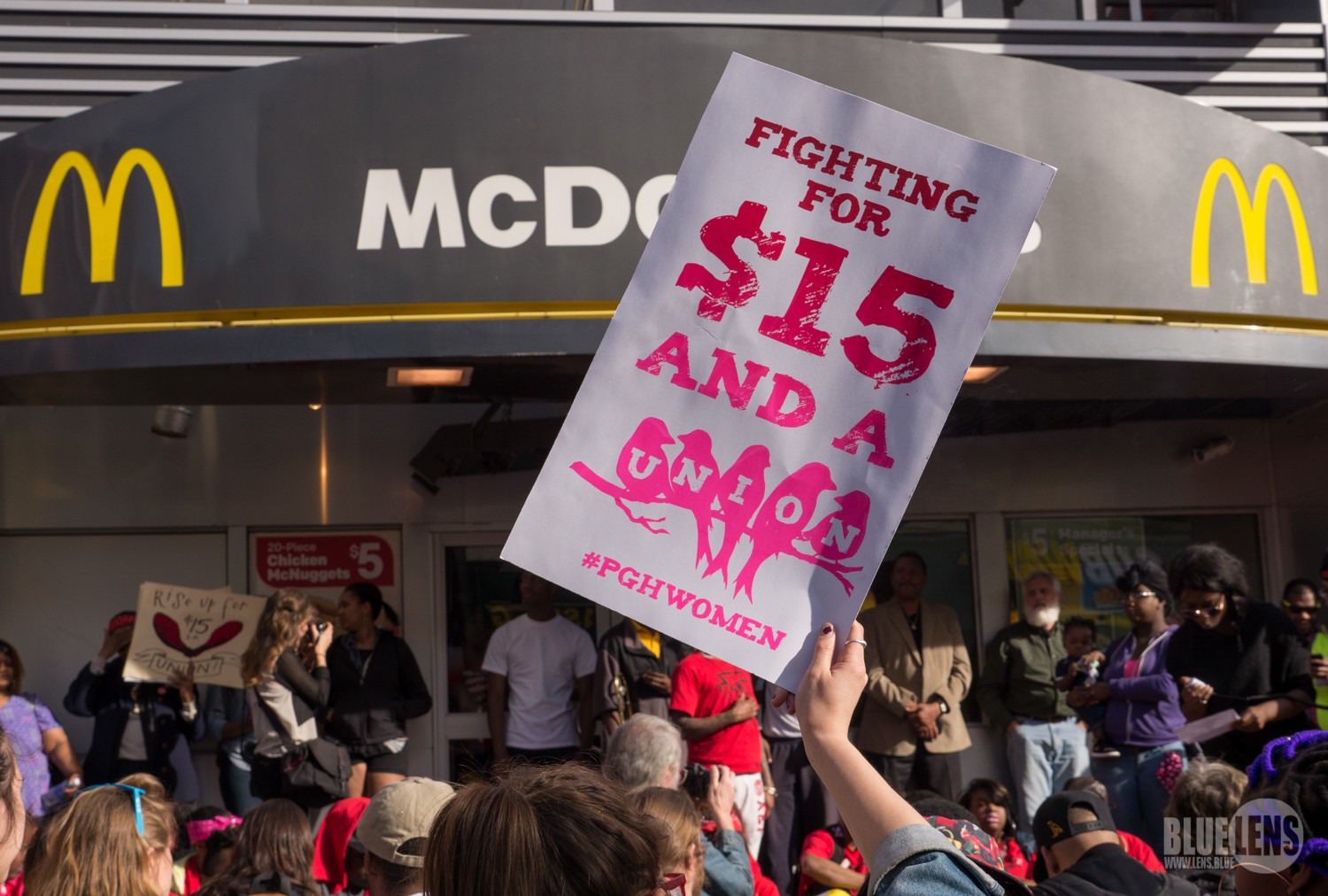Have you read about the growing number of fast food workers going on strike for $15 an hour? Because of growing media attention gained by this “Fight for $15,” workers from other sectors and other organizations are adopting similar messaging and tactics. Given no indication Congress will raise the federal minimum wage, restaurant and retail wages are likely to remain an issue ripe for coverage.
As a former advocate for labor issues now transitioning into a journalistic career, I am familiar with the nuances of the Fight For $15 campaign and can offer these resources and tips for covering it.
1. Know who is “fighting.”
The Fight for $15 was started by a group of fast food workers in New York City in 2012. The campaign has since expanded to many workers from hundreds of cities. The Fight for $15 now includes adjunct faculty, home care workers, childcare providers and retail workers (notably Walmart workers supported by the United Food and Commercial Workers union). The Service Employees International Union is funding and backing most of the local organizing groups and shaping their national media efforts.
2. Follow the #FightFor15 on Twitter.
Workers periodically announce one-day walkout strikes using the hashtag #FightFor15 on social media. The walkouts have been accompanied by marches that shut down streets as well as sit-ins at stores and restaurants. Additionally, local groups have their own Twitter handles, such as @Show_Me15, @ATLRaiseUp, @FightFor15FL and others.
The #Fightfor15 hashtag and local handles are good ways to connect with workers in your region as sources.
3. Understand key messaging from proponents of $15/hour wages.
The Fight for $15 is rooted in the presumption that the federal and many state and local minimum wage rates are too low and do not align with the standard of living they were created to ensure. Workers and union officials argue those who rely on minimum-wage jobs as a primary income cannot afford basic necessities.
More information about the minimum wage is available from the left-leaning National Employment Law Project and the left-leaning Economic Policy Institute. The UC Berkeley Center for Labor Research and Education also produces a number of reports on the minimum wage.
4. Understand the positions held by opponents of $15/hour wages.
Critics argue the workers’ campaign is an attempt to deepen union dues coffers. WorkerCenters.com, a project of the right-leaning Center for Union Facts, aggregates information supporting this claim.
In addition, the National Restaurant Association provides materials highlighting negative impacts to raising minimum wages. The NRA maintains wage increases could “ limit hiring, increase prices, cut employee hours.”
Many states run their own restaurant or hospitality associations, which may also have sources who could comment about the potential economic impact of raising wages in this sector.
5. Understand the new Securities and Exchange Commission’s new rule relating to CEO pay ratio.
In early August, 2015, the SEC adopted a new rule requiring public companies to provide shareholders and the public a figure outlining the ratio of pay disparity between the company’s CEO and the median salary of its employees. The reporting is required beginning in 2017. Unions and workers will likely adopt new messaging related to these disclosures to advance a narrative about income inequality. It’s important to note that the new rule allows for flexibility in determining the compensation for “median employee salary” and who is included in that figure.
For a comprehensive report of the Fight for $15, read former New York Times labor reporter Stephen Greenhouse’s in-depth piece on the Fight for $15 in The Atlantic.
—
Adam DeRose is a graduate assistant at the Reynolds National Center for Business Journalism at ASU’s Walter Cronkite School of Journalism. Before attending Cronkite, Adam worked at Interfaith Worker Justice, a national nonprofit that mobilized workers, people of faith and clergy to support worker rights campaigns. He was responsible for the digital communication and online advocacy campaigns for the organization. During his tenure at the organization, IWJ supported the Fight for $15, and he contributed to messaging related to the campaign.










